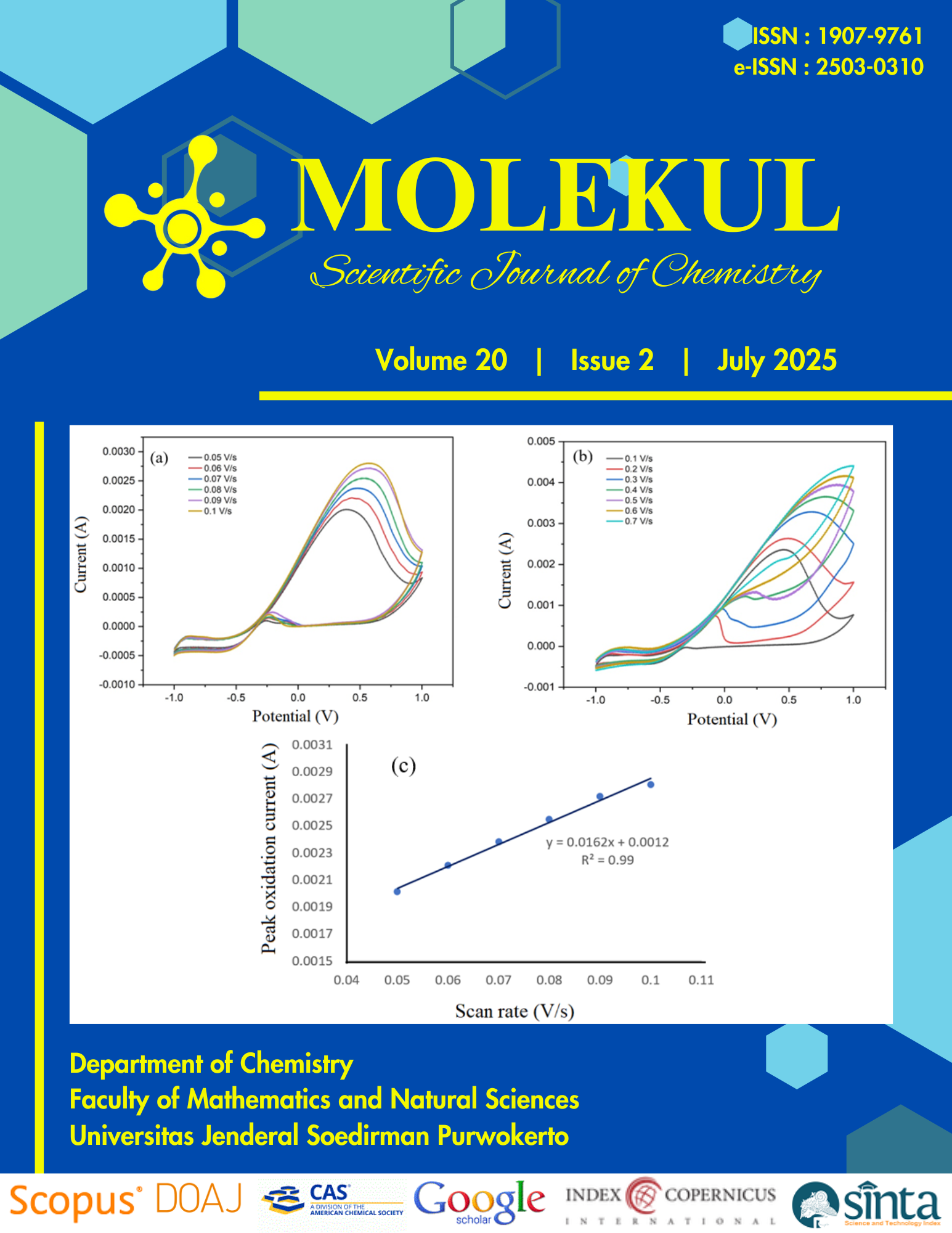Effect of Organic Solvents in the Preparation of Single Aged Garlic Transfersomes and Their Phytochemical Activities
Abstract
ABSTRACT. Single Aged Garlic (SAG), a fermented product from a single garlic, has been extensively studied for its health benefits due to its allicin content. To enhance SAG's drug delivery capabilities, this study aimed to characterize transfersome formulations containing SAG, investigating their phytochemical activities and the effects of different absolute solvents. Transfersome formulations, consisting of soy-phospholipid and either Span-60 (T1) or Tween-80 (T2), were prepared using absolute ethanol (EA) or a chloroform-methanol mixture (CM). Characterization included particle size, polydispersity index (PDI), and zeta potential. Phytochemical tests assessed antioxidant activity, total phenolic content, and total flavonoid content. Results showed that T2-CM formulations exhibited the best PDI (0.372 ± 0.022), smallest particle size (T1-CM: 84.333 ± 1.762 nm), and lowest zeta potential (T2-EA: -25.667 ± 0.666 mV). Additionally, T1-CM and T2-CM formulations demonstrated superior antioxidant, flavonoid, and phenolic content compared to T1-EA and T2-EA. Transfersomes formulated with organic solvents like absolute ethanol, methanol, and chloroform exhibit promising characteristics and can effectively protect the antioxidant compounds, flavonoids, and phenols present in SAG extracts. These solvents, known for their ability to dissolve polar and nonpolar compounds, facilitate the formation of stable, well-characterized transfersomes. These findings suggest that transfersomes prepared with chloroform-methanol mixtures are more promising for SAG delivery.
Key words: Organic solvents, Phytochemicals, Single aged garlic, Transfersomes
Authors agree with the statements below:
- Authors automatically transfer the copyright to the MOLEKUL journal and grant the journal right of first publication with the work simultaneously licensed under a Creative Commons Attribution 4.0 International License (CC BY 4.0).
- Authors are able to enter into separate permission for the non-exclusive distribution of the journal's published version of the work (e.g., post it to an institutional repository or publish it in a book), with an acknowledgment of its initial publication in this journal.













